1. India’s Crackdown on Child Labour – Telangana, Bihar, and Rajasthan Lead Rescues (2024-25) – Governance
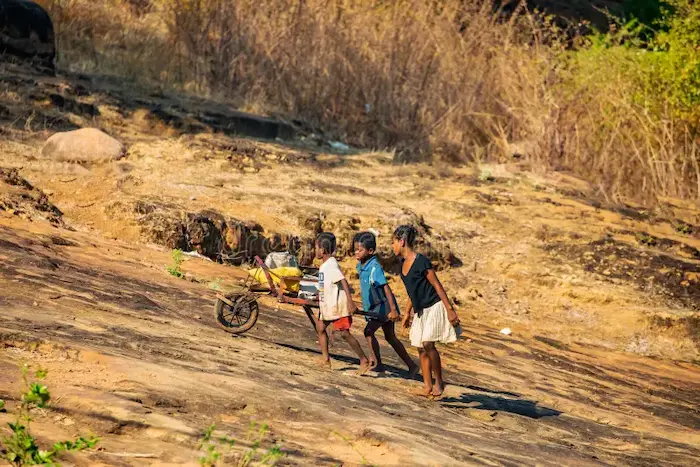
Why in News?
Telangana, Bihar, and Rajasthan emerged as frontrunner states in child labour rescue operations and arrests during the financial year 2024-25, as per a recent report from a child rights advocacy network.
Key Takeaways:
- Over 53,000 children were rescued nationwide in the fiscal year 2024-25.
- The states of Telangana, Bihar, and Rajasthan were prominent in both the number of rescue operations and arrests.
- The report highlights systemic issues that persist in the fight against child labour and provides detailed recommendations to enhance interventions.
Additional Details & Analysis:
Scale and Nature of Rescue Operations
- 38,889 rescue operations were conducted in collaboration with various NGOs and authorities from April 2024 to March 2025.
- 53,651 children were rescued, predominantly from the most dangerous and exploitative forms of child labour.
- Approximately 90% of rescued children were working in hazardous sectors, as identified by the International Labour Organisation (ILO) Convention No. 182. Such sectors include spas, domestic labour, informal entertainment, mining, and hazardous manufacturing industries.
Legal Enforcement & Actions
- A large number of FIRs were registered after rescue operations; around 85% were explicitly connected to child labour offences.
- Telangana, Bihar, and Rajasthan demonstrated notably stronger law enforcement compared to other large states such as Uttar Pradesh, indicating uneven enforcement across different states.
Recommendations from the Report:
- National Mission to End Child Labour: A central initiative with clear targets, dedicated funding, and monitoring mechanisms.
- District-level Task Forces: Creation of specialized Child Labour Task Forces at district-level to ensure effective implementation of policies and regular oversight.
- Rehabilitation Policy: Development of comprehensive rehabilitation frameworks that include education, healthcare, psychological support, and economic empowerment for rescued children and their families.
Global and National Commitments
- India is a signatory to significant international conventions focused on the elimination of child labour (ILO Convention No. 182 on Worst Forms of Child Labour, among others).
- However, the report calls for enhanced coordination among institutions, stricter law enforcement, improved public awareness campaigns, and increased social protection and rehabilitation support systems.
Significance of the Issue:
Child labour represents not just a grave violation of human rights but also a substantial socio-economic concern. It undermines children’s education, health, and overall development, perpetuating cycles of poverty. Stronger governance mechanisms, vigilant enforcement, and comprehensive rehabilitation are imperative to eradicate child labour in India effectively.
Summary:
A recent child rights advocacy report revealed that Telangana, Bihar, and Rajasthan were leading states in rescuing child labour victims and arresting offenders during the fiscal year 2024-25. Despite significant rescue operations and legal interventions, systemic issues persist. The report emphasizes launching a national initiative, establishing district task forces, and creating robust rehabilitation policies to address child labour comprehensively.
Exam Connect – Possible Questions
Prelims
1. Which of the following states were identified as leading in child labour rescue operations in the year 2024-25?
A. Uttar Pradesh, Bihar, Rajasthan
B. Maharashtra, Gujarat, Karnataka
C. Telangana, Bihar, Rajasthan
D. Madhya Pradesh, Odisha, Tamil Nadu
Answer: C. Telangana, Bihar, Rajasthan
2. Consider the following statements about India’s recent child labour scenario:
1.More than 50,000 children were rescued in India in the year 2024-25.
2.Around 90% of rescued children were involved in hazardous occupations as per ILO Convention 182.
3.Uttar Pradesh recorded higher child labour arrests compared to Telangana and Rajasthan.
Which of the above statements is/are correct?
A. Only 1 and 2
B. Only 2 and 3
C. Only 1 and 3
D. All of the above
Answer: A. Only 1 and 2
Mains
1. Discuss the systemic challenges faced by India in eradicating child labour. Suggest effective governance mechanisms and rehabilitation strategies to address this persistent issue. (Answer in 250 words.)
2. “Despite international and national legal frameworks, child labour remains a severe socio-economic and human rights issue in India.” Critically analyse this statement with suitable examples and suggest comprehensive solutions to combat child labour. (Answer in 250 words.)
2. NAVYA Initiative for Skilling Adolescent Girls – Governance
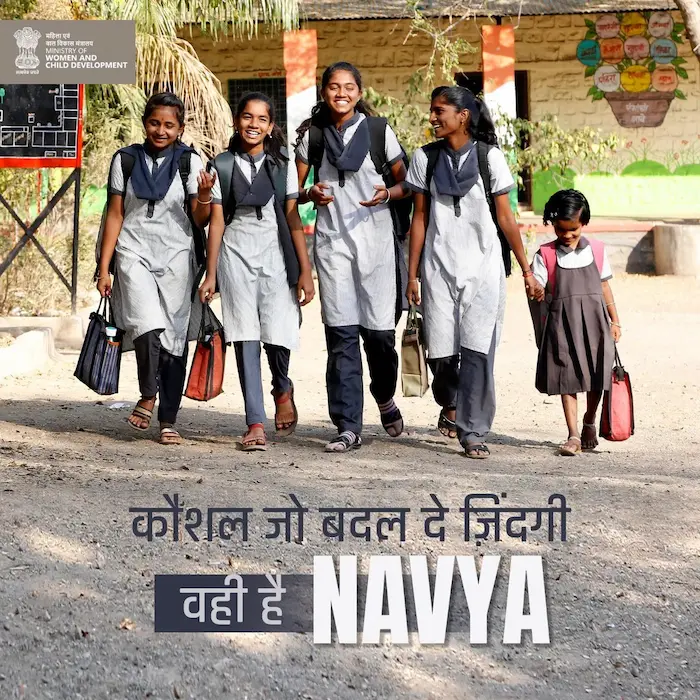
Why in News?
The Ministry of Women and Child Development (MWCD) has launched the NAVYA initiative, aimed at empowering adolescent girls aged 16–18 through focused skill development, especially in non-traditional sectors.
Key Takeaways:
- Target Group: Adolescent girls aged 16–18 years who have completed at least Class 10, especially from under-served and aspirational districts, including those in the North-Eastern region.
- Pilot Implementation: The initiative will initially be rolled out across 27 districts in 19 states, prioritizing inclusion and regional representation.
- Core Focus: To nurture girls’ aspirations by imparting vocational training and building confidence, employability, and entrepreneurial capability in emerging and non-traditional sectors.
Additional Details & Analysis:
1. Focus on Non-Traditional Skills
NAVYA diverges from conventional vocational training (like tailoring or beauty services) by offering training in:
- Drone technology
- Solar energy systems
- Electronics and gadget repair
This encourages girls to enter sectors traditionally dominated by men and adapt to rapidly evolving technological landscapes.
2. Certification and Integration with National Schemes
- Training will be linked with recognized skill certification programs under:
- Pradhan Mantri Kaushal Vikas Yojana (PMKVY)
- PM Vishwakarma Yojana
This will enhance credibility and portability of the skills acquired.
3. Post-Training Opportunities
NAVYA is not just a training program but a pathway model—it aims to guide adolescent girls towards:
- Formal employment
- Entrepreneurship opportunities
- Further vocational or academic education
This ensures that the skills acquired translate into real economic opportunities.
4. Vision for Inclusive Development
The initiative aligns with the larger national goal of Viksit Bharat@2047, seeking to:
- Bridge the gender gap in skill development and employment.
- Make adolescent girls agents of socio-economic transformation.
- Promote inclusive growth, especially in backward and rural areas.
Summary:
The NAVYA initiative, launched by the MWCD, is a forward-looking program targeting skill development for adolescent girls (16–18 years) in underserved areas. By focusing on non-traditional sectors and offering certified training linked to employment and entrepreneurship, NAVYA aims to empower young women to contribute meaningfully to India’s economy. It embodies the vision of inclusive growth and aligns with India’s developmental roadmap towards Viksit Bharat by 2047.
Exam Connect – Possible Questions
Prelims
1. The recently launched NAVYA initiative is primarily associated with:
A. Digital financial literacy for senior citizens
B. Maternal healthcare for rural women
C. Skilling adolescent girls in non-traditional sectors
D. Providing free nutrition to school-age girls
Answer: C. Skilling adolescent girls in non-traditional sectors
2. Which of the following correctly describes the NAVYA initiative?
1.It targets adolescent girls aged 16–18 who have completed at least Class 10.
2.The training is limited to traditional skills like tailoring and cooking.
3.Certification is provided under PMKVY and PM Vishwakarma schemes.
Select the correct option:
A. 1 and 2 only
B. 1 and 3 only
C. 2 and 3 only
D. All of the above
Answer: B. 1 and 3 only
Mains
1. Discuss the significance of the NAVYA initiative in promoting gender-inclusive skill development in India. How can such programs contribute to achieving the goals of Viksit Bharat@2047? (Answer in 250 words)
2. “Skill development programs for adolescent girls can be a game-changer in India’s socio-economic transformation.” Analyze this statement in the context of the NAVYA initiative. (Answer in 250 words)
3. Food Processing Sector in India: Ensuring Inclusive Growth and Global Integration – Economy
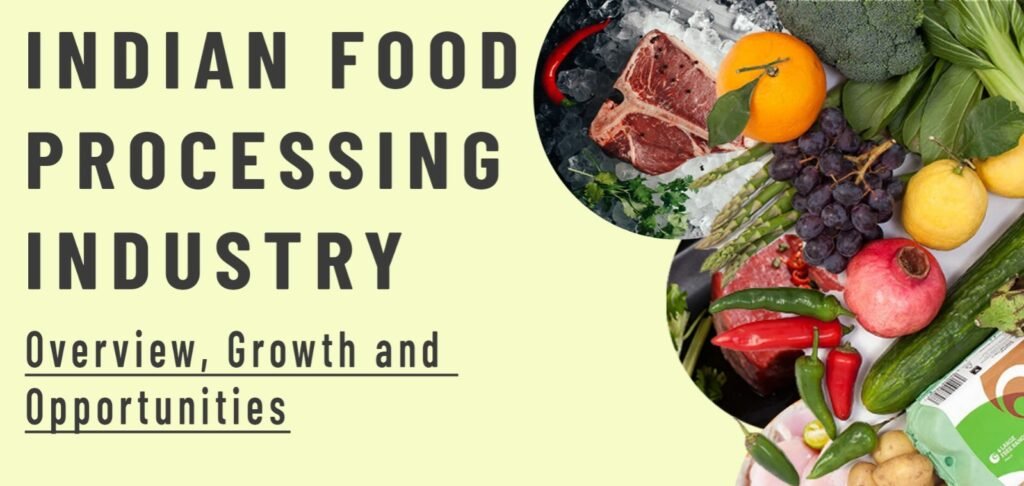
Why in News?
A recent article highlights the transformative growth of India’s food processing sector over the last 11 years. It underscores how flagship schemes like PMFME, PMKSY, and the PLI Scheme have empowered micro-entrepreneurs, enhanced agricultural value chains, and strengthened India’s position as a global food processing hub.
Key Takeaways:
- The sector is witnessing a grassroots food revolution, with traditional Indian crops gaining access to global markets.
- Government schemes have formalized micro-enterprises, supported rural entrepreneurs, and improved food infrastructure.
- India’s food processing sector is gaining global recognition through exports and international events like World Food India.
Detailed Analysis & Context:
1. Grassroots Food Revolution & Rural Entrepreneurship
- Case Example: Gyanish Kumar Mishra from Bihar transformed makhana (fox nuts) into a flavored brand exported to the USA and Canada, highlighting the sector’s export potential.
- Local ventures such as tribal kitchens in Bastar, backed by the PMFME Scheme, blend traditional knowledge with market-oriented approaches, showcasing cultural preservation through commerce.
2. Government Schemes Fueling Growth
a) Pradhan Mantri Kisan SAMPADA Yojana (PMKSY):
- Created over 250 lakh metric tonnes of food processing capacity.
- Attracted significant private sector investment.
- Generated employment opportunities, especially in rural and semi-urban areas.
b) PM Formalisation of Micro Food Processing Enterprises Scheme (PMFME):
- Launched under the Atmanirbhar Bharat Abhiyan.
- Provided financial support and capacity building to over 3.3 lakh SHG members, enabling formalization and market access.
c) Production Linked Incentive (PLI) Scheme for Food Processing:
- Generated 3.3 lakh jobs.
- Triggered major capital investments in food processing infrastructure.
- Boosted production of processed food suitable for domestic and international markets.
3. Infrastructure and Quality Assurance
- Budget 2024–25 Provisions:
- Establishment of multi-product irradiation units to extend shelf-life and reduce losses.
- Expansion of NABL-accredited food testing laboratories for enhanced food quality and safety compliance.
- Research & Innovation:
- Institutions like NIFTEM (National Institute of Food Technology Entrepreneurship and Management) are driving innovation.
- A new NIFTEM institute is proposed in Bihar to develop region-specific food technologies and skills.
4. Global Engagement & Market Access
- World Food India serves as a major platform for:
- Showcasing Indian food products.
- Attracting foreign investment and technology.
- Promoting collaborations with global companies.
- Indian processed food is increasingly present in international markets, contributing to export diversification.
Significance for Inclusive Growth & Global Integration
- Inclusive Growth:
- Empowers women and SHG members.
- Promotes tribal and rural entrepreneurship.
- Enhances income and livelihood security in agriculture-based communities.
- Global Integration:
- Enhances India’s export profile through processed foods.
- Positions India as a reliable food manufacturing hub.
- Attracts FDI and global partnerships in agribusiness.
Summary:
India’s food processing sector has evolved into a key pillar of inclusive economic development and global competitiveness. Supported by flagship schemes like PMKSY, PMFME, and the PLI, the sector fosters rural entrepreneurship, creates employment, and promotes value addition in agriculture. With enhanced infrastructure, research institutions like NIFTEM, and increasing global engagement, the sector exemplifies self-reliance (Atmanirbhar Bharat) and sustainable growth.
Exam Connect – Possible Questions
Prelims
1. Which of the following government schemes is specifically aimed at supporting micro food processing enterprises under the Atmanirbhar Bharat initiative?
A. PMGSY
B. PMFME
C. PMKSY
D. PM Jan Dhan Yojana
Answer: B. PMFME
2. Consider the following statements regarding the food processing sector in India:
1. The PMKSY has helped create over 250 lakh metric tonnes of processing capacity.
2. PMFME primarily supports large agribusinesses and FDI proposals.
3. The PLI Scheme has generated employment in the food processing sector.
Which of the statements are correct?
A. 1 and 2 only
B. 1 and 3 only
C. 2 and 3 only
D. All of the above
Answer: B. 1 and 3 only
Mains
1. “India’s food processing sector is a vital link between agriculture and industry.” Examine how government initiatives have promoted inclusive growth and global competitiveness in the sector. (Answer in 250 words)
2. Discuss the role of schemes like PMFME and PMKSY in empowering rural entrepreneurs and enhancing agricultural value chains in India. How can the sector be leveraged further for export promotion? (Answer in 250 words)
4. India’s Strategy to Deal with China’s Rare Earth Export Restrictions – International Relations
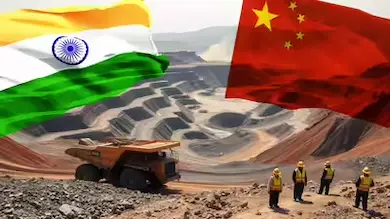
Why in News?
Amid rising global trade tensions—especially between the United States and China—the strategic importance of rare earth elements (REEs) has come to the forefront. In May 2025, China imposed new restrictions on rare earth exports, raising concerns over supply chain vulnerabilities. In response, India has ramped up efforts to build domestic capabilities and reduce external dependency, particularly on China.
Key Takeaways:
- Rare earth elements are critical for industries such as clean energy, defense, electronics, and electric vehicles.
- China controls over 90% of global refining capacity of these minerals, making it a single-point risk in global supply chains.
- India is countering this by launching exploration and processing initiatives, including the National Critical Mineral Mission.
Additional Details & Analysis:
1. Importance of Critical Minerals
a) Technological & Industrial Relevance
- Lithium, cobalt, and nickel: Key components in lithium-ion batteries, essential for EVs, mobile phones, and renewable energy storage.
- Dysprosium and neodymium: Used in wind turbines and permanent magnets.
- Tellurium, gallium, and indium: Vital for solar photovoltaic technologies.
b) Defense & Strategic Applications
- Rare earths are used in missile guidance systems, radar, and satellites, making them critical for national security.
2. China’s Dominance in Rare Earths
- China controls:
- ~90% of global refining capacity.
- One of the largest known reserves of rare earths.
- Recent restrictions (May 2025) caused global panic, disrupting supply chains.
- Similar tactics were used by China in 2010 against Japan, highlighting the geopolitical leverage these resources provide.
3. Global Response & Diversification Efforts
- United States and European Union:
- Entering negotiations with China for guaranteed supply.
- Exploring alternate sources like Brazil, Saudi Arabia, Vietnam, and even deep-sea mining.
- Global strategic stockpiling and joint ventures in mineral exploration are being considered.
4. India’s Strategy: Towards Mineral Self-Reliance
a) National Critical Mineral Mission
- Launched to reduce import dependency and strengthen domestic capability.
- Focuses on:
- Survey and exploration of untapped mineral reserves.
- Boosting local refining and processing infrastructure.
- Encouraging private sector participation and technology partnerships.
b) International Collaboration
- India is engaging with countries like Australia, Canada, and Russia for knowledge sharing, joint exploration, and technology transfers in critical mineral development.
c) Public-Private Models
- India is promoting PPP models for sustainable mining and mineral processing.
- Aim: Reduce strategic vulnerabilities in case of future export curbs or geopolitical conflicts.
Significance for India’s Strategic Autonomy
- Energy Security: Critical minerals are essential for achieving net-zero goals and boosting domestic renewable energy infrastructure.
- Economic Resilience: Reducing dependency on imports enhances economic stability and industrial competitiveness.
- Geopolitical Leverage: A self-reliant supply of rare earths can help India assert itself globally, especially in trade negotiations and strategic alliances.
Summary:
China’s monopoly over rare earth elements has triggered global concern, particularly following its export restrictions in 2025. These elements are crucial for clean energy, defense, and technology. India is addressing this challenge by launching the National Critical Mineral Mission, promoting domestic exploration, and building partnerships with mineral-rich countries. A long-term, multi-pronged strategy is essential for India to ensure supply security, minimize strategic vulnerabilities, and position itself as a global player in the critical minerals value chain.
Exam Connect – Possible Questions
Prelims
1. The National Critical Mineral Mission recently launched by the Indian government primarily aims to:
A. Enhance the nutritional value of agricultural produce
B. Promote deep-sea fishing and marine biodiversity
C. Secure India’s supply of essential minerals for high-tech industries
D. Develop uranium refining capacity for nuclear energy
Answer: C. Secure India’s supply of essential minerals for high-tech industries
2. Which of the following minerals are classified as “critical minerals” due to their role in clean energy technologies?
1. Lithium
2. Neodymium
3. Cobalt
4. Bauxite
Select the correct answer:
A.1, 2, and 3 only
B. 2, 3, and 4 only
C. 1, 3, and 4 only
D. All of the above
Answer: A.1, 2, and 3 only
Mains
1. Discuss the strategic importance of rare earth elements in the global economy. How can India reduce its dependency on China and build domestic capability in critical minerals? (Answer in 250 words)
2. “The control of critical minerals has emerged as a new geopolitical tool in the 21st century.” Evaluate this statement in light of recent global developments and India’s policy response. (Answer in 250 words)
5. 50 Years of the National Emergency (1975–2025) – Polity
Why in News?
On June 26, 2025, India marks 50 years since the imposition of the National Emergency in 1975 by then Prime Minister Indira Gandhi. The Emergency period (1975–1977) remains one of the most controversial and defining episodes in India’s constitutional and political history.
Key Takeaways:
- National Emergency is governed under Article 352 of the Constitution.
- Can be declared by the President on grounds of war, external aggression, or armed rebellion.
- India has experienced three national emergencies since independence: in 1962, 1971, and 1975.
- The 1975 Emergency was declared on grounds of “internal disturbance”, a phrase later removed by the 44th Constitutional Amendment (1978).
Understanding National Emergency under Article 352
1. Definition and Grounds for Proclamation
A National Emergency empowers the central government to take extraordinary steps during times of national crisis. The President may proclaim it if the security of India or any part of it is threatened by:
- War
- External Aggression
- Armed Rebellion
(Earlier term “internal disturbance” was vague and misused; replaced by “armed rebellion” in 1978 through the 44th Amendment.)
2. Process of Proclamation
- Requires a written recommendation from the Union Cabinet.
- Can be declared even before the occurrence of war or armed rebellion (i.e., anticipatory).
- Must be approved by both Houses of Parliament within 1 month.
- Once approved, it remains in force for 6 months, and can be renewed indefinitely every six months with parliamentary approval.
3. Judicial Review and the 44th Amendment
- Before 1975, courts could scrutinize the basis of Emergency.
- During 1975 Emergency, civil liberties were curtailed, and courts’ powers were limited.
- The 44th Amendment (1978) restored judicial review, allowing courts to invalidate an Emergency if found to be mala fide or unconstitutional.
Historical Instances of National Emergency in India
- 1962–1968 – Due to the Sino-Indian War (war with China).
- 1971–1977 – Declared during the Indo-Pak War (initially justified due to external aggression).
- 1975–1977 – Declared due to “internal disturbance”, widely criticized as a political misuse of constitutional powers to retain power after a court verdict invalidated PM Indira Gandhi’s election.
4. Constitutional and Political Implications
a) Centre-State Relations:
- Emergency centralizes authority.
- State legislative powers can be overridden.
- Centre can legislate on all subjects, including those in the State List.
b) Financial Control:
- Union can alter financial allocations to states.
- Greater central control over budgetary resources.
c) Suspension of Fundamental Rights:
- Article 19 (Freedom of speech, movement, association, etc.) is automatically suspended during war or external aggression.
- Other rights can be suspended under Article 359, excluding Articles 20 and 21 (right to life and personal liberty), post-44th Amendment.
Legacy and Significance
- The 1975 Emergency is considered a dark phase in Indian democracy, where civil liberties, media freedom, and political opposition were suppressed.
- It led to important constitutional reforms and safeguards to prevent abuse of Emergency powers.
- It serves as a critical case study in executive overreach, constitutional resilience, and democratic accountability.
Summary:
June 26, 2025, marks 50 years since the declaration of the Emergency in 1975, a landmark event that tested India’s constitutional democracy. Enacted under Article 352, the Emergency provisions grant the Centre sweeping powers during national crises. However, the misuse of these powers in 1975 led to long-term reforms, especially through the 44th Amendment, reinforcing democratic checks and protections. Understanding the Emergency’s constitutional basis, history, and legacy is crucial for grasping the balance between national security and civil liberties.
Exam Connect – Possible Questions
Prelims
1. Under which article of the Indian Constitution can a National Emergency be declared?
A. Article 356
B. Article 360
C. Article 352
D. Article 361
Answer: C. Article 352
2. Which of the following grounds is not valid under Article 352 after the 44th Constitutional Amendment?
A. War
B. Armed Rebellion
C. External Aggression
D. Internal Disturbance
Answer: D. Internal Disturbance
Mains
1. The 1975 National Emergency remains a defining event in Indian constitutional history. Examine the constitutional provisions related to national emergency and critically analyse the lessons learned from its misuse. (Answer in 250 words)
2. Discuss how the 44th Constitutional Amendment strengthened democratic safeguards in India with reference to emergency provisions. (Answer in 250 words)
6. Prime Ministers’ Museum and Library (PMML): Commemorating India’s Democratic Leadership – History & Culture
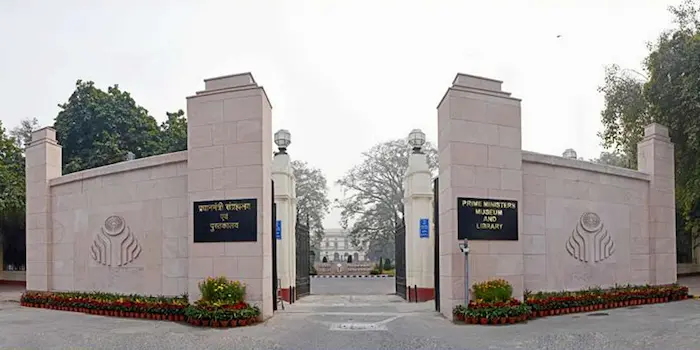
Why in News?
The 47th Annual General Meeting (AGM) of the Prime Ministers’ Museum and Library (PMML) Society was recently held, chaired by the Prime Minister of India. The meeting reaffirmed the institution’s role in preserving and showcasing the contributions of all Indian Prime Ministers to the country’s democratic journey.
Key Takeaways:
- PMML was formerly known as the Nehru Memorial Museum and Library (NMML).
- It is housed at the historic Teen Murti House in New Delhi.
- Renamed in 2023 to honor all Prime Ministers of India, not just Jawaharlal Nehru.
- Functions as a research and educational hub focused on governance, democracy, and modern Indian history.
Additional Details & Analysis:
1. Historical Significance of Teen Murti House
- Built as the residence of the Commander-in-Chief of British India during colonial rule.
- Became the official residence of Prime Minister Jawaharlal Nehru from 1948 to 1964.
- Symbolic of India’s transition from colonial rule to democratic governance.
2. Evolution and Mission of PMML
- Established in 1966 to preserve the legacy of India’s first Prime Minister, Nehru.
- Expanded in 2023 to include all Prime Ministers in recognition of their roles in shaping the Republic.
- Functions as an autonomous institution under the Ministry of Culture.
- The Prime Minister of India serves as the ex-officio President of the PMML Society.
3. Key Institutions within PMML
- Pradhanmantri Sangrahalaya (Museum):
- A state-of-the-art museum inaugurated to chronicle the lives and contributions of all Prime Ministers of India.
- Uses interactive technology and archives to engage the public, especially youth.
- Library and Archives:
- Houses extensive collections of manuscripts, speeches, photographs, and rare documents on modern Indian history.
- Supports academic research and scholarship on political and social developments in India.
- Centre for Contemporary Studies:
- Facilitates seminars, lectures, and collaborative research on themes related to governance, democracy, and leadership.
- Nehru Planetarium:
- Focused on scientific education and astronomy, encouraging scientific temper among school children and the general public.
Significance in Cultural and Democratic Context
- Preserving Democratic Legacy: PMML acts as a living record of India’s democratic evolution by documenting the contributions of successive Prime Ministers.
- Educational Role: It serves as a knowledge hub for students, researchers, and citizens, promoting democratic values and public awareness of India’s political history.
- Symbol of Pluralism: The transformation from NMML to PMML reflects India’s inclusive democratic ethos, recognizing all leaders regardless of party or ideology.
Summary:
The Prime Ministers’ Museum and Library (PMML), formerly the Nehru Memorial Museum and Library, stands as a symbolic and educational institution that honors the contributions of all Prime Ministers of India. Located at the historic Teen Murti House, it has grown from a memorial for Nehru to a comprehensive repository of India’s democratic journey. With facilities like the Pradhanmantri Sangrahalaya, a world-class library, and the Nehru Planetarium, PMML plays a vital role in public education, historical research, and the promotion of democratic values.
Exam Connect – Possible Questions
Prelims
1. The Prime Ministers’ Museum and Library (PMML), recently in news, is located at:
A. Rashtrapati Bhavan
B. Teen Murti House
C. India Gate
D. Parliament Library Complex
Answer: B. Teen Murti House
2. Which of the following statements about the Prime Ministers’ Museum and Library (PMML) is correct?
1. It was earlier known as the Nehru Memorial Museum and Library.
2. It is an autonomous institution under the Ministry of Culture.
3. It includes facilities like the Nehru Planetarium and Centre for Contemporary Studies.
Choose the correct option:
A. 1 and 2 only
B. 1 and 3 only
C. 2 and 3 only
D. All of the above
Answer: D. All of the above
Mains
1. The transformation of the Nehru Memorial Museum and Library into the Prime Ministers’ Museum and Library reflects the evolving nature of India’s democratic memory. Discuss the cultural and political significance of such institutions in preserving democratic values. (Answer in 250 words)
2. Evaluate the role of public history institutions like the PMML in promoting democratic engagement and awareness among citizens, especially the youth. (Answer in 250 words)
7. India–US Trade Deal: Agricultural Sector Concerns and Policy Tensions – International Relations
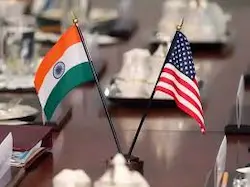
Why in News?
As India and the United States work toward finalizing a bilateral trade agreement before the July 9, 2025 deadline, serious concerns have been raised by two major Indian agricultural sectors:
- The sugar industry is opposing the import of ethanol and genetically modified (GM) maize.
- The soybean processing industry is resisting the potential import of GM soybeans.
These objections reflect deep anxieties about the impact of trade liberalization on domestic agriculture, especially in the context of biofuel policies and farmer livelihoods.
Key Takeaways:
- The US is the largest producer of maize and ethanol, pushing for export access to the Indian market.
- Indian sectors fear that cheaper GM imports will hurt local producers, depress prices, and threaten rural employment.
- India’s ethanol blending policy has advanced significantly, raising food vs fuel concerns.
- NITI Aayog has proposed GM maize imports to meet biofuel targets.
- SOPA (Soybean Processors Association of India) strongly opposes GM soybean imports due to economic and logistical implications.
Additional Details & Analysis:
1. Ethanol Blending in India: A Growing Policy Priority
- Ethanol blending in petrol rose from 1.5% in 2013–14 to 14.6% in 2023–24, with a target of 20% by 2025–26.
- Ethanol is now produced not only from sugarcane but also from grains like maize and surplus rice.
- In 2024–25, 68% of ethanol is projected to be grain-based, signaling a major shift in feedstock sourcing.
2. Food vs Fuel Debate Intensifies
- Sugar millers argue for sugarcane-based ethanol, as it avoids competing with food and animal feed sources like maize.
- Using maize for fuel risks reducing availability for livestock feed and food security, especially when domestic stocks are limited.
- Importing US GM maize may help meet ethanol targets without impacting local food supplies, according to NITI Aayog—but it could displace local maize farmers and compromise seed sovereignty.
3. Soybean Sector’s Resistance
- SOPA warns that GM soybean imports would:
- Undermine 7 million soybean farmers.
- Disrupt domestic processing units due to price competition.
- Cause further decline in farmer incomes, especially as current market prices are already below MSP.
- Reduced import duties on edible oils have already pressured the sector, leading to operational downsizing among processors.
4. Trade vs Agriculture Policy Dilemma
- This scenario illustrates the tension between trade liberalization and agricultural protection:
- The US seeks market access for GM crops and ethanol.
- India must balance international trade commitments with domestic food security, farmer welfare, and biofuel targets.
Strategic Concerns:
- Biotechnology Governance: India has yet to fully approve GM maize and GM soybean for commercial use; importing them raises biosafety and regulatory concerns.
- Rural Livelihoods: The livelihoods of millions of farmers and small processors are at stake.
- Trade Negotiation Leverage: The US may pressure India on agri-imports in exchange for concessions on IT services or tariff reductions in other sectors.
Summary:
As India nears a crucial trade agreement with the US, its agricultural sector faces a crossroads. The sugar and soybean industries are resisting US pressure to open up markets for GM maize, GM soybeans, and ethanol, citing threats to farmer incomes, food security, and domestic industry sustainability. While importing cheaper raw materials may help meet ethanol blending targets and biofuel commitments, it could undermine rural livelihoods and trigger a food vs fuel dilemma. The situation underscores the need for a balanced trade strategy that integrates economic growth with agrarian resilience and food sovereignty.
Exam Connect – Possible Questions
Prelims
1. Which of the following is/are reasons behind India’s hesitation to import GM maize and soybeans from the US?
1. Threat to rural employment and farmer incomes
2. Concerns over food and feed security
3. India’s surplus production of GM crops
Select the correct option:
A. 1 and 2 only
B. 2 and 3 only
C. 1 and 3 only
D. All of the above
Answer: A. 1 and 2 only
2. Consider the following statements about ethanol production in India:
1. Sugarcane is the only raw material used for ethanol production in India.
2. India aims to achieve 20% ethanol blending in petrol by 2025–26.
3. NITI Aayog has recommended importing GM maize to meet ethanol targets.
Which of the above statements are correct?
A. 1 and 2 only
B. 2 and 3 only
C. 1 and 3 only
D. All of the above
Answer: B. 2 and 3 only
Mains
1. The ongoing India–US trade negotiations highlight a classic conflict between trade liberalization and agricultural sustainability. Discuss the key concerns of Indian agricultural sectors regarding the import of GM crops and ethanol. (Answer in 250 words)
2. “India’s ethanol blending policy must strike a balance between energy goals and food security.” Critically examine this statement in the context of recent policy shifts and trade negotiations. (Answer in 250 words)

